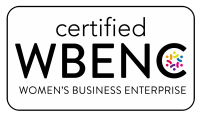Starting a new website for your business or updating your current website and not sure where to begin or how to go about it? WordPress may be the answer!
WordPress is a website building and managing tool that is used on over 30% of the websites on the internet, and it is popular for a good reason: it is a versatile platform that supports all the features you need to make your website an effective component of your digital marketing strategy.
Check out our top tips that will make your life easier and help you to improve your WordPress website.
1. Build With a Purpose
Before you get started, it’s important to remember that it is not enough to just “put a website up there” and forget about it. Websites are an essential component of a digital marketing strategy and work best when designed with your business goals and your customers in mind. Done correctly, your website gives you the opportunity to showcase your brand, make a great first impression, and generate new business leads.
2. Use a Mobile Responsive and SEO Friendly Theme
The main purpose of a WordPress theme is to set up the design, appearance, and some of the functionality of a website, and not all themes are equal! Some themes will load on features that were at one time the “Bees-Knees” in website design but are no longer considered best practice. A good theme will include at minimum the following features:
- Valid HTML: Properly structured HTML5 semantic markup including meta, heading, and content tags helps search engines to understand and prioritize your content.
- Mobile-Responsive Design: Your website should display correctly and look good on mobile, tablet, and desktop. This is important for user experience and for search: 60-70% of traffic comes from mobile, and Google now uses the mobile version to index and rank websites.
- Lightweight Page Size: Features like carousels and sliders can potentially add a lot of weight to a page, if not built correctly. A good theme keeps file weight to a minimum, which still leaves room for content weight such as high-quality graphics and images. This also helps with SEO, as a slow website ranks poorly on search engines.
3. Optimize Your Images
Images help build engagement with visual appeal, but they also have a role to play in search engine optimization and accessibility. Each time you add an image to your website, do two things: compress it to reduce the file size, and add a description to the alternative text tag (the Alt Tag).
Compressing an image helps your site load faster, and fast site speed is essential for SEO and to keep people on your site. Google penalizes slow loading websites, and visitors will leave rather than wait for a website to load.
If your site includes a blog (which we highly recommend), set a featured image for each blog article. This helps to ensure that your preferred image displays if the article is shared on social media.
The alt text should accurately describe the image and what people will find in the content. If you are showing an image of people at a seminar, don’t just call it “group of people in a room”. Instead describe it as “Attendees at a Social Media Marketing Workshop for Small Business Owners.” This way, if the image is unavailable or if the reader is using a screen reader, the alt tag text is what your visitor will see in place of your image AND both the visitor and search engines gain insight and context for your content.
4. Use Google Analytics
WordPress will give you some information on how your website is doing, but it won’t tell you everything you need to know. Google Analytics provides a comprehensive tool to measure your performance, including everything from SEO to website visitor demographics and behavior.
5. Share on Social Media
Google loves social media as much as it loves keywords, and social media links can help your site’s visibility in the search rankings. Encourage people to follow you on social media by including links to your social media accounts in the header or footer area. If your site includes a blog, add “share” buttons to encourage people to share your articles.
In Conclusion,
WordPress is one of the best and most versatile website platforms for nearly every type of website, but you will still need to actively manage it in order to make the most of its features and capabilities.
If you think your website could use a boost, consider a free 30-minute digital marketing assessment. TMC would love to evaluate your current site and help take it to the next level as part of a customized strategy for your business.

